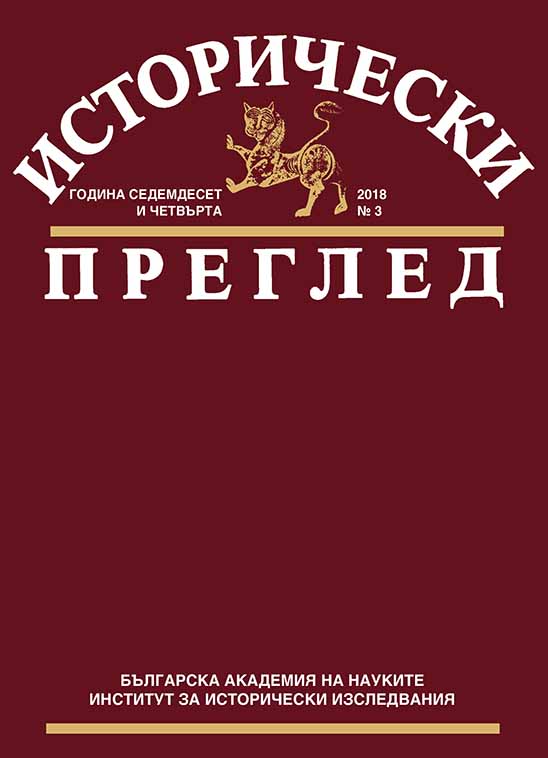
We kindly inform you that, as long as the subject affiliation of our 300.000+ articles is in progress, you might get unsufficient or no results on your third level or second level search. In this case, please broaden your search criteria.

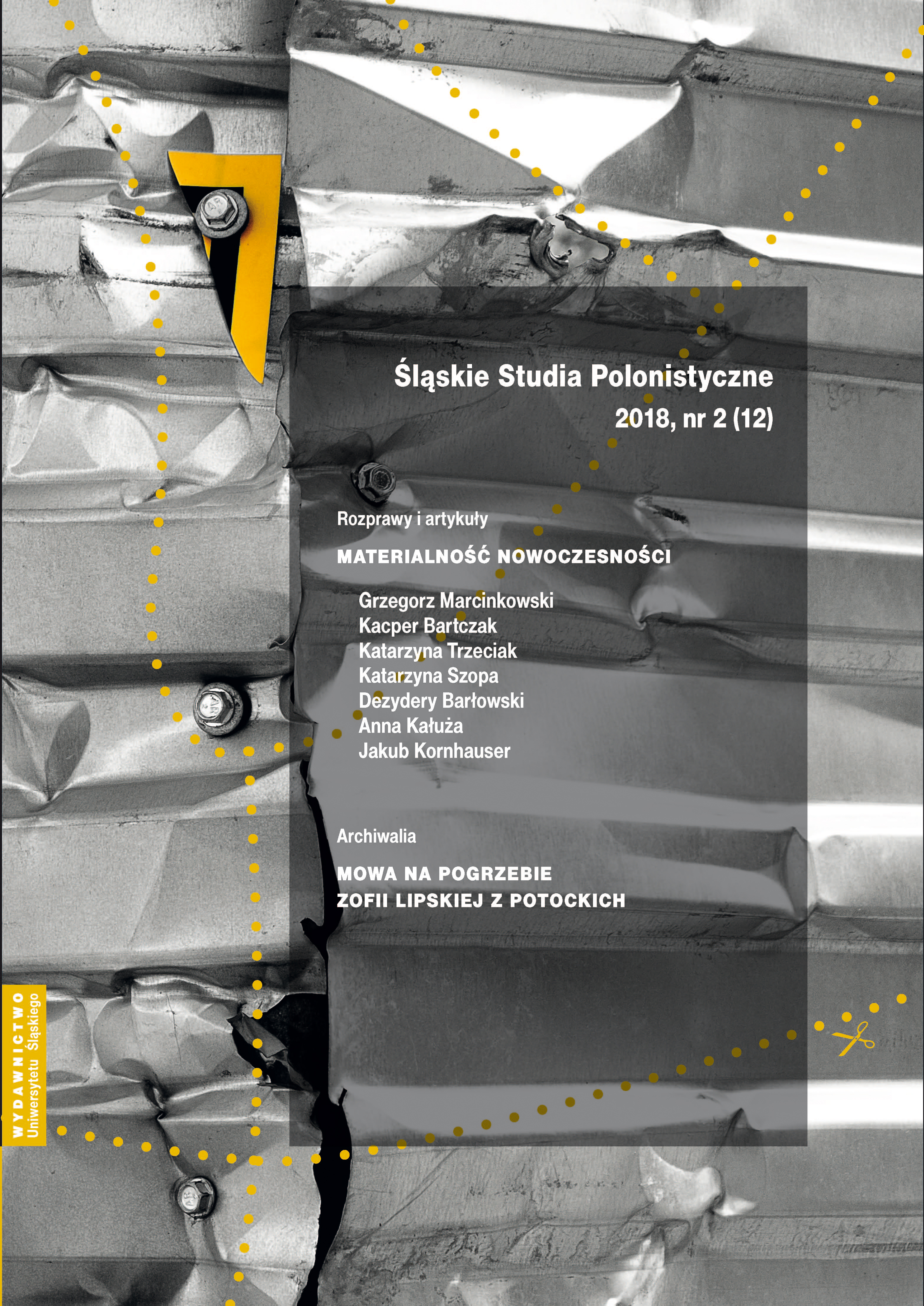
The author of the article tries to reconstruct both the way of perceiving subjectivity in the works of Walter Benjamin and the ways in which the tension between identity and history is manifested in his writings. The article concentrates on the concept of shock, developed by the philosopher during reading Baudelaire and Kafka. With this concept, it is possible to describe the transition from the narrative conception of experience to “point experience” constituted by series of sudden unconnected impulses. The moment conducing to this transition was the I World War which for Benjamin – as well as for others significant thinkers of that time – constituted an important turning point.
More...
The article presents discussions on the shape of Polish literary studies which were conducted in connection with the creation of the „Historia literatury polskiej” [History of Polish Literature] by Feliks Bentkowski. Both the circumstances of the creation of Bentkowski’s work and its reception are presented, with special attention paid to their institutional context, professionalization of philology and bibliography as sciences, as well as to relations between the polemicists. The main part of the article is the reconstruction of the semantics of the historical term “literature”, which is the subject of Bentkowski’s, Jan Śniadecki’s and Gotfryd Ernest Groddeck’s statements. The author advances a thesis that the attempts to define the term “literature” in their texts correspond, in fact, with voices in the debate on the concept of a scientific character of literary studies, which at that time constituted itself as a separate discipline.
More...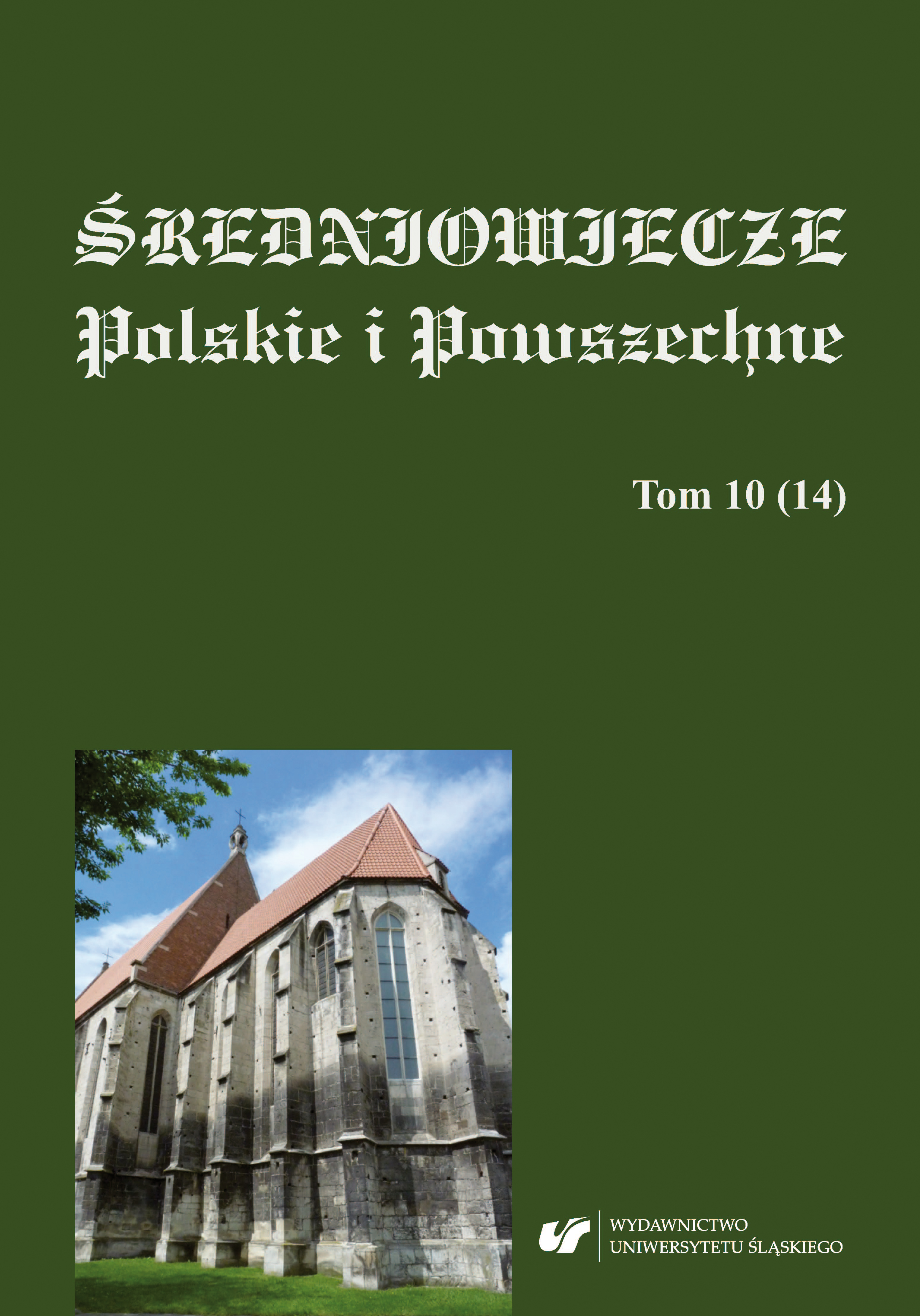
Skaldic poetry that praised the deeds of the Viking heroes have been for a long time at the forefront of academic inquiry, particularly in the context of the Scandinavian activity in the region of the British Isles at the turn of the 10th century. Poems such as Hallfred Óttarsson’s “Óláfsdrápa”, Sigvat Þórðarson’s “Víkingarvísur” or Óttar Svarti’s “Hǫfuðlausn” have been perceived as testimonials to the memory of the Viking past, and they were often utilized by the poets themselves in their efforts to present their creative output as fundamental in the creation of the ideology of power. The presented article proposes a different approach to the poems praising the warrior deeds of the Scandinavian rulers. The author posits that the selected poems were not only meant to commemorate the warrior feats of their heroes, but first and foremost to emphasize their kingly attributes. To this end, the poems presented the victims of the Viking attacks as rebels and evildoers, righteously punished for their crimes by the sovereign and forced to recognize his authority.
More...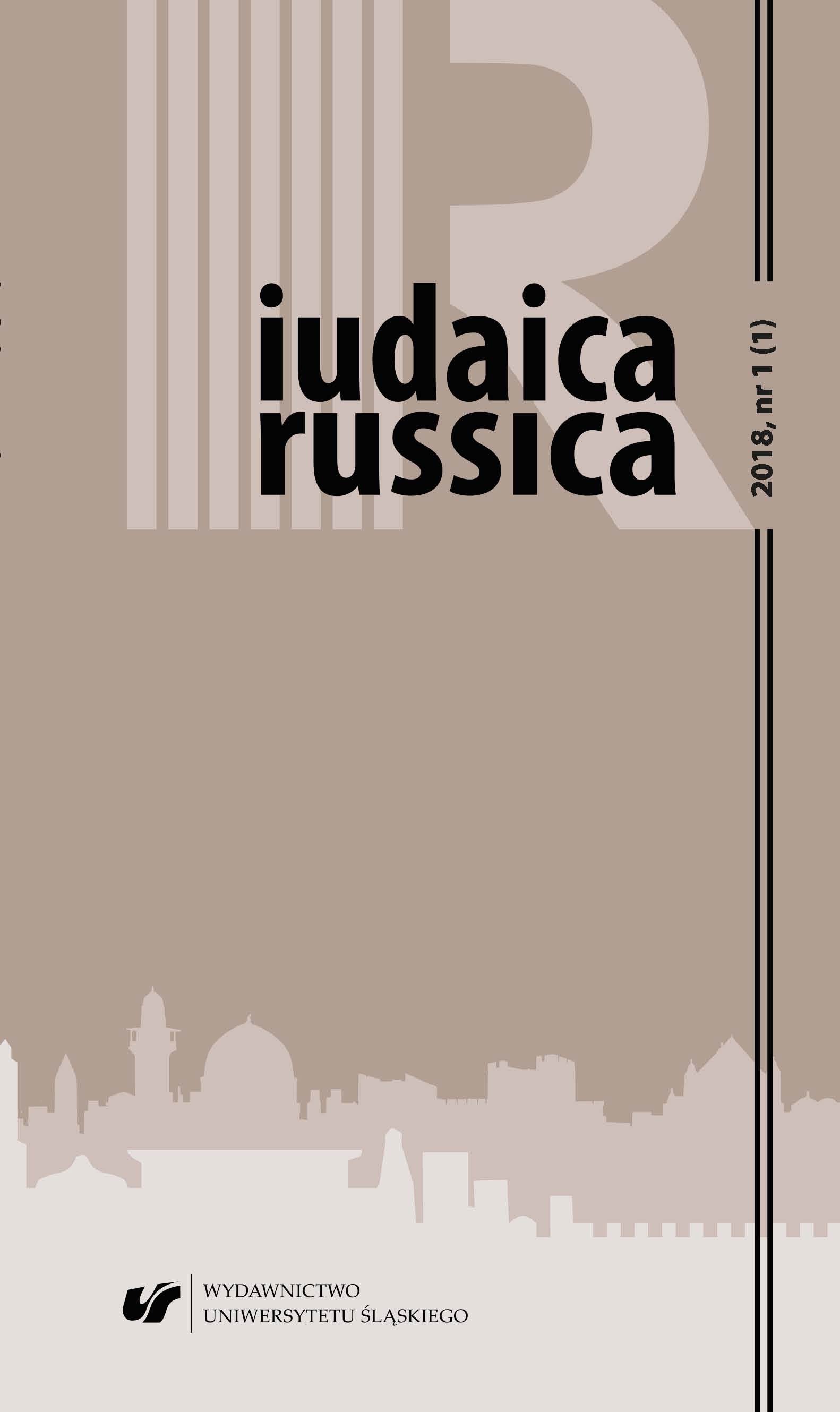
A comprehensive study of “The Jewish question in modern novel” printed in “Illustrated Weekly Newspaper” (“Tygodnik Ilustrowany”) in 1879 by Waleria Marrené (1832–1903) — Polish writer and publicist, critic and feminist of the positivist age, has been analyzed. The author in great depth goes into the so-called Jewish question in modern novel, represented by examples from four European literatures: French, German, English and Polish. Valeria Marrené analyses the conflict between the local community and the Jewish-origin newcomers and indicates differences in presenting subject matters interesting for her.
More...
Paul Celan’s (1920–1970) poetic cartography builds on the “holograms of darkness” (thus addressed by Amy Colin, an American Celan scholar), the metaphorical constellations which map the experiences of suffering, twilight and death. The poetry “after Shoa” of the Romanian poet of Jewish descent, writing in German, constitutes a particular landscape of his musical “death fugue” in which human suffering is depicted in surrealist images that silently express of the trauma of the Holocaust. Celan’s theodicy is created as the “rhetoric of the ineffable”, a silent dialogue with the Other (Lévinas) but also the absent Other, the No one with whom the poet converses and who becomes the addressee of his “poems-prayers” or “no-poems” (noems), as he calls them. It is the absent Other the poet worships and celebrates in his “poetry of silence”. Language also experienced suffering but was “enriched by it” and now can be heard “on the other side of silence”. Celan’s poetry is firmly anchored in the memory of the Holocaust and Jewish people’s traumatic experiences. To soothe his pain, the poet constantly returns to the “Brunnenland”, his birthplace located in Bukovina where he always found the spring that fueled his poetic soul and heart. The poet’s favourite metaphor is that of the meridian which marks the reference place on the cartographic grid of all his poetic images.
More...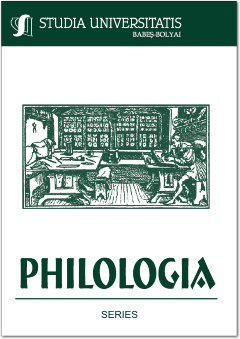
My Cleaner: Help or Foe? Maggie Gee’s My Cleaner tackles the problem of racism and family life in the lives of two women who intend to support or “help” each other and end up bringing out the worst in each other. Profound racism and an acute sense of class difference alienate the two women: Vanessa Henman and Mary Tendo, her cleaner from Uganda. The theoretical background of the paper is offered by the theories of Paul Gilroy.
More...
A Tribute to Theodore Roszak. The Making of a Counterculture. The American professor Theodore Roszak (1933 – 2011) is generally credited with the invention of the term “counterculture”, although his seminal book from 1969, The Making of a Counter Culture spells the two words separately. To us, today it seems to be the work of a rather cautious, but pioneering sociologist, who acknowledges indeed the legitimacy of the student revolts of the Sixties but at the same time tries to distance himself from their heat with the cool objectivity of the academic observer.
More...
Flicker. Theodore Roszak’s sophisticated and extreme long novel Flicker, published in 1991, resonates in many ways with the masterpieces of the cryptographic thriller tradition, like Umberto Eco’s Il nome della rosa (1980) or Dan Brown’s Da Vinci Code (2003). Its core lies in the conspiracy theories, due a fictional plot driven from the deep shadows of the world of cinematography. By doing some research, a UCLA film scholar comes across the films made by a rather allusive American director protected by a secret organization. The director’s hidden biography takes us back to the interwar Germany, making the scholar to discover that his subject’s films contain hidden messages that can be deciphered by means of a special device.
More...
“We Stopped Dreaming”: Julie Otsuka’s (Un)Told Stories of Picture Brides. Focusing on Julie Otsuka’s acclaimed 2011 novel, The Buddha in the Attic, this paper will investigate the picture bride phenomenon as a multilayered trade of lives, identities, emotions and expectations, drawing a vivid picture of the protagonists’ subjection to exploitation, abuse, discrimination and deceit.
More...
Humour Mechanisms in Translation P.G. Wodehouse into Romanian. The aim of the present study is to analyse the Romanian translation of several instances of Wodehousian humour from the novels Thank You, Jeeves and Right Ho, Jeeves. We shall point to the humour mechanisms that may lead to the untranslatability of humour and to its being lost or destroyed during the translation process. However, this apparent untranslatability is not insurmountable, and humour can actually travel safely around the world.
More...
Representations of Black Masculinity in the 2010s Hip-Hop. One of the most well-known perceptions of contemporary African-American males comes from hip-hop music, a genre dominated largely by Black men. The overly sexual, hypermasculine, angry and aggressive persona is a characteristic of these performers. However, in recent years, this toxic masculinity has been challenged and deconstructed by mainstream artists. Important voices in hip-hop, such as Kendrick Lamar, Kanye West and Jay-Z are embracing a more truthful and intellectual approach to what it means to be a Black man in the United States. This paper sets out to explore these changes, exemplifying them through the lyrics of commercially successful and critically acclaimed rappers.
More...
Herman Melville’s Benito Cereno and the Subversion of the Slavery Ideology. The current paper aims to analyse in Herman Melville’s novella the interplay between the ambiguous narrative voice limited by Amasa Delano’s racially charged perception of events and the auctorial presence in the text. We argue that in Benito Cereno, the writer has constructed a symbolically charged but carefully targeted criticism against the social and moral failure of the slavery system in the U.S.
More...
Between Law and Custom: A View of the Racial Relationships in Charles Waddell’s Chesnutt’s “The House behind the Cedars”. The aim of this paper is to investigate the manner in which Charles Waddell Chesnutt skillfully uses the conventions of the sentimental novel and of the tragic mulatto/a character, familiar to his white readers, in order to dismantle racial preconceptions and expose the terrible ramifications of racism. The novel The House behind the Cedars shows that race is artificially constructed out of various external markers such as custom, law, dubious scientific findings, which, however, can have dire consequences for the individuals who need to obey such limitations.
More...
“The Outlook That Would Be Right.” Wallace Stevens’s Cinematic Vision. Drawing on the premise that a fundamental characteristic of modernist art is the convergence of various expressive and technical modes, this paper provides an examination of a selection of texts by Wallace Stevens in which the poetic vision and method intersect with the principles of cinematic montage, with a view to demonstrating the persistence throughout his oeuvre of a particular form of “sight”, employed for tackling a series of epistemological and aesthetic issues.
More...
Jennifer Egan’s A Vision from the Good Squad: A Narrative of Health, Disease and Death. This paper analyzes Jennifer Egan’s novel/ short story cycle entitled A Visit from the Goon Squad, winner of the 2011 Pulitzer Prize for fiction. The chapters/stories shift back and forth in time, moving from the late sixties to the present day and into the near future. The Proustian influence is obvious in this fascinating narrative of the self, the ailing body, and finally death. The interesting structure of the book, due to the influence of the TV series and the power point slides, adds a fascinating quality to this text which is the result of a vision that has all the characteristics of the contemporary age.
More...
Sense of Place and Belonging in Sorley MacLean’s Poetry. Placing himself in the wake of Hugh MacDiarmid’s Scottish Renaissance, Sorley MacLean initiated the Gaelic Renaissance with the same aim in view. He turned to the Scottish impressive landscape as to a rich provider of metaphorical images that spoke of tradition, continuity and national consciousness.
More...
Dora D’istria: Mapping the Cultural Transfer of Intimacy at the “Fringes” of Europe. The present paper examines two texts by Dora D’Istria dealing with women’s emancipation and empowerment in the mid-nineteenth century. Thus, we shall analyze how women situated their experience against the discourses that regulated intimacy in the context of nation-building in that respective period.
More...
Communication Event. In Information and Communication Sciences, the phrase “communication event” is not clearly defined. We situate the notion of communication event in a space where the actors, whether human or non-human, equally participate in the event through the use of language. A communication event is the effect of preliminary staging. In this article we study the notion of communication event exploring three films of the same film maker, each of them creating an event within an event.
More...
A Stylistics of Exiled Lives. The article explores the correspondence between the particular stylistics of exiled lives (specific ways, manners, and forms of living developed during exile) and a specific critical method (para-biography). While all exiles can be perceived as people with underachieved destinies - exile is, in this case, comparable to premature death, lost works, imperfect style, sterility, etc. - the biographer who endeavors to “capture” the ways of the exiled should rely on a critical faculty fit to such uncompletedness, yet a faculty mostly uncommon to his own lot: imaginativeness or critical imagination. Such correspondence between the unique situation and the para-biography of the exiled has been suggested by Ilina Gregori’s books on three personalities (Mihai Eminescu, Emil Cioran and Matila Ghyka) who turned their own experience of exile into particular expressions.
More...